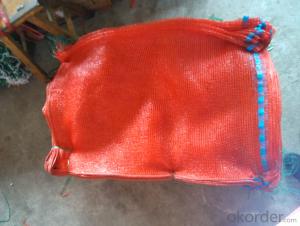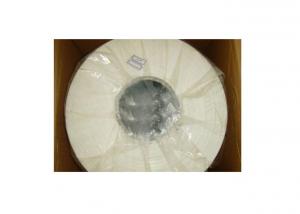Plastic Seedling Plastic Nursery Seeding Tray Seed plant propagator
- Loading Port:
- China main port
- Payment Terms:
- TT OR LC
- Min Order Qty:
- 1000 pc
- Supply Capability:
- 10000000 pc/month
OKorder Service Pledge
OKorder Financial Service
You Might Also Like
Structure of the seed tray: · Top quality and competitive price. · Variety design and good appearance. · Easy to use, and remove. · Durable and reusable. · Eco-Friendly.
Advantages: · Top quality and competitive price. · Variety design and good appearance. · Easy to use, and remove. · Durable and reusable. · Eco-Friendly.
Application: · Ideal for Starting seeds and Transplanting Seedling. · Suitable for both manual and automatic planting. · Suitable for Propagating Vegetables, Flowers and other plant from seed · in green-house or indoors.
Description Main Features of the seed tray: · Ideal for Starting seeds and Transplanting Seedling. · Suitable for both manual and automatic planting. · Suitable for Propagating Vegetables, Flowers and other plant from seed in green-house or indoors. Using time: · thickness of 0.5mm can be used 1 to 2 times. · thickness of 0.6mm can be used 3 to 4 times. · thickness of 0.7mm can be used 5 to 6 times. · thickness of 0.8mm can be used 7 to 8 times. · thickness of 0.9mm can be used 8 to 9 times. · thickness of 1.0mm can be used 8 to 10 times. Thickness vs. Weight: · Thickness of trays are from 0.5mm to 1.0mm. · 1.0mm: 155g±5g; 100pcs/ctn. · 0.9mm: 140g±5g; 120pcs/ctn. · 0.7mm: 110g±5g; 150pcs/ctn. · 0.6mm: 95g±5g; 180pcs/ctn. · 0.5mm: 80g±5g; 200pcs/ctn.
Seed Tray Specification: Materialps/pvcThickness0.5mm-1.5mm, standard:1mmWeight80g(±5)g-230g(±5)g, Standard weight:155g(±5)gSizelength:490mm-540mm, width:190mm-345mm,depth:25mm-150mm Standard:54mmX28mmCell count18-512Packagein cartonUsing time8-10 times
FAQ: Q:How Can I Get A Sample? A:You can get samples by communicate with our export sales. Q:How Long Is Delivery? A:Delivery time will be 7-25 days according to order quantity. Q:What Is The MOQ? A:Our MOQ is 1*20FT container quantity, allow to mix several items. Q:What Is Our Normal Payments Terms? A:Our normal payment terms now is T/T, L/C or Western Union,Papal. Q:How Do I Order Your Products? A:You can check our website for any items you interest and you can also get communication with our export sales and order for it accordingly. Q:What Kinds Of Material We Use In Our Product? A:Our plastic flower pots use material such as PP polymer or PE polymer.
|
- Q: What are the various techniques employed for seedbed preparation when utilizing agricultural plastic mulch?
- <p>Agricultural plastic mulch is used to enhance soil conditions and crop growth. Different types of seedbed preparation methods include: 1) Ridge Mulching, where the soil is raised into ridges and mulch is applied to retain moisture and warmth; 2) Flat Mulching, where the soil is leveled and mulch is laid flat, suitable for mechanized planting; 3) No-Till Mulching, a conservation method that leaves the soil undisturbed and applies mulch directly over the previous crop residue; 4) Strip Mulching, used in row crops where mulch is applied in strips between rows; and 5) Black Mulching, employing black plastic to suppress weeds and absorb heat, warming the soil. Each method is chosen based on crop type, climate, and specific agricultural goals.</p>
- Q: How long does it take for ground cover to establish and fill in?
- The time it takes for ground cover to establish and fill in varies depending on various factors such as the type of ground cover, growing conditions, and the desired coverage. Generally, it can take anywhere from a few weeks to several months for ground cover to establish and start filling in. However, some fast-growing ground covers can provide coverage within a few weeks, while slower-growing varieties may take longer, possibly up to a year or more.
- Q: When at the grocery store which is better for the environment: paper or plastic bags?*Thanks!*
- Paper because plastic bags are not only dangerous to the environment but also to your health. It takes literally an estimated 400-1000 years for 1 plastic bag to breakdown in the environment. Unfortunately worldwide use of plastic bags has grown to 500 billion to a trillion pieces a year. With only less than 1% of these bags being recycled that figure is astounding.
- Q: What's the approxamative melting point of the plastic of a pen tube. Celsius and Farenheit please.
- Plastics do not have a melting point. Plastics usually get softer as the temperature rises. Many different plastics are used for making pens. Different formulas have different material properties. I do not know but becoming completely liquid may not happen in an atmosphere containing oxygen before combustion occurs.
- Q: How are plastic water tanks used in agriculture?
- Plastic water tanks are commonly used in agriculture to store and distribute water for various purposes such as irrigation, livestock watering, and crop spraying. These tanks provide a reliable and cost-effective solution for water storage and management on farms, ensuring that water is readily available for agricultural activities, especially during periods of drought or water scarcity.
- Q: Can ground cover plants be used to fill in gaps between pavers or stepping stones?
- Yes, ground cover plants can be used to fill in gaps between pavers or stepping stones. They not only provide a visually pleasing look but also help to prevent weed growth and erosion between the stones. Some ground cover plants, such as creeping thyme or creeping thyme, are particularly suitable for this purpose as they can tolerate foot traffic and have a low growth habit that fills in gaps effectively.
- Q: What are the different types of plastic containers used in horticulture?
- There are several types of plastic containers commonly used in horticulture, including nursery pots, hanging baskets, seedling trays, grow bags, and propagation trays.
- Q: How are plastic tree wraps recycled after use?
- Plastic tree wraps can be recycled after use through a process called plastic recycling. The wraps are collected and sorted at recycling facilities. They are then cleaned, shredded, and melted down to create new plastic materials that can be used for various purposes such as manufacturing new products or packaging.
- Q: Are nursery trays suitable for starting native wildflowers?
- Yes, nursery trays are suitable for starting native wildflowers. They provide a controlled environment for seed germination and early growth, allowing for optimal conditions such as moisture and temperature control. Additionally, nursery trays offer individual cells or compartments for each seed, preventing overcrowding and facilitating easy transplanting once the seedlings are ready to be moved to a permanent location. Overall, nursery trays are a practical and efficient tool for starting native wildflowers.
- Q: the cistern on my loo is plastic.it's a little discoloured and i'd like to paint it uld i use white emulsion or gloss,which i have,or do i need to get a different type of paint?
- There are countless varieties of plastic. some could be painted actual. some won't be able to be painted in any respect. Others rely on the particular variety of paint and education. maximum pliable furniture won't be able to be painted without looking mattress.
Send your message to us
Plastic Seedling Plastic Nursery Seeding Tray Seed plant propagator
- Loading Port:
- China main port
- Payment Terms:
- TT OR LC
- Min Order Qty:
- 1000 pc
- Supply Capability:
- 10000000 pc/month
OKorder Service Pledge
OKorder Financial Service
Similar products
Hot products
Hot Searches
Related keywords






























